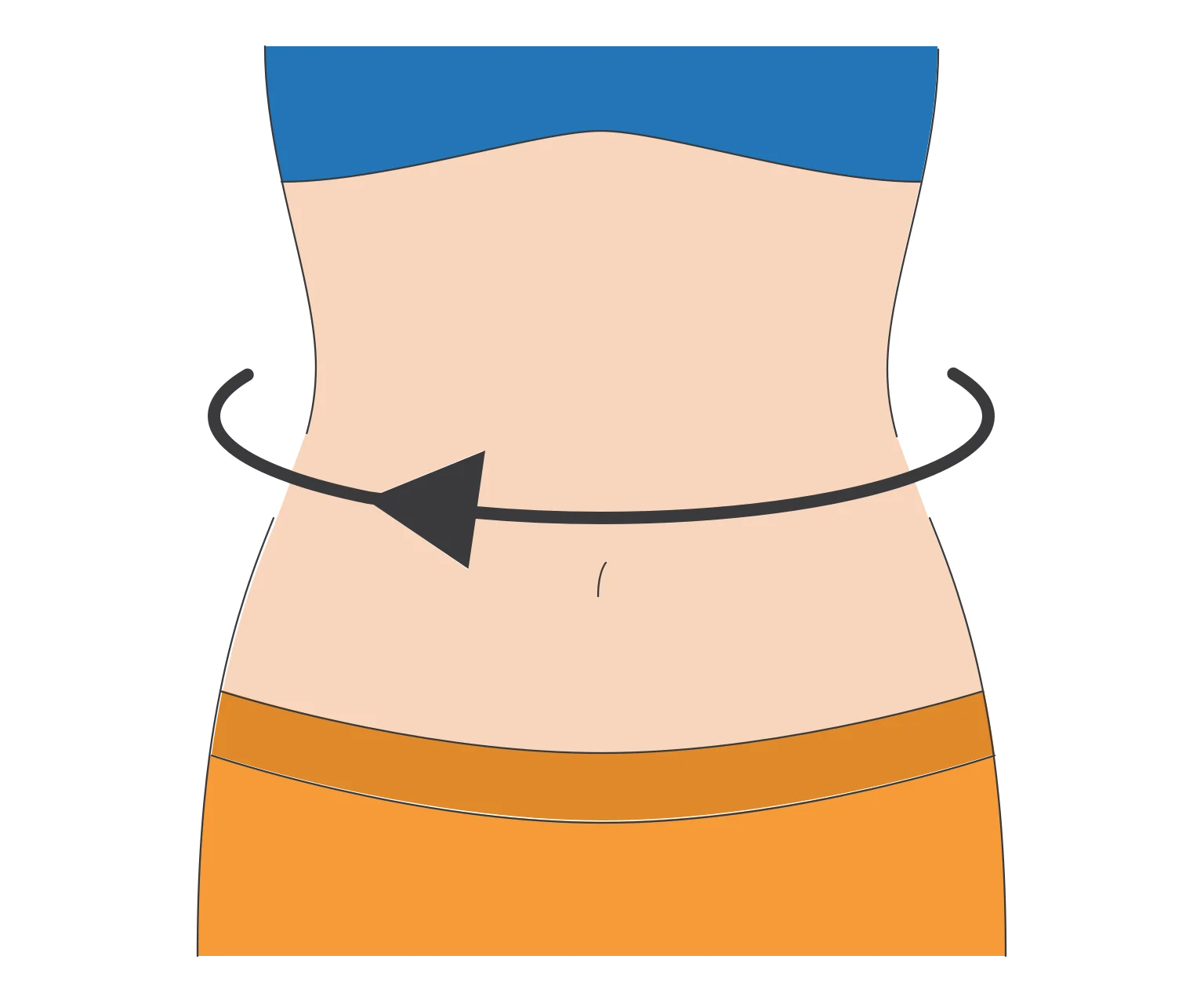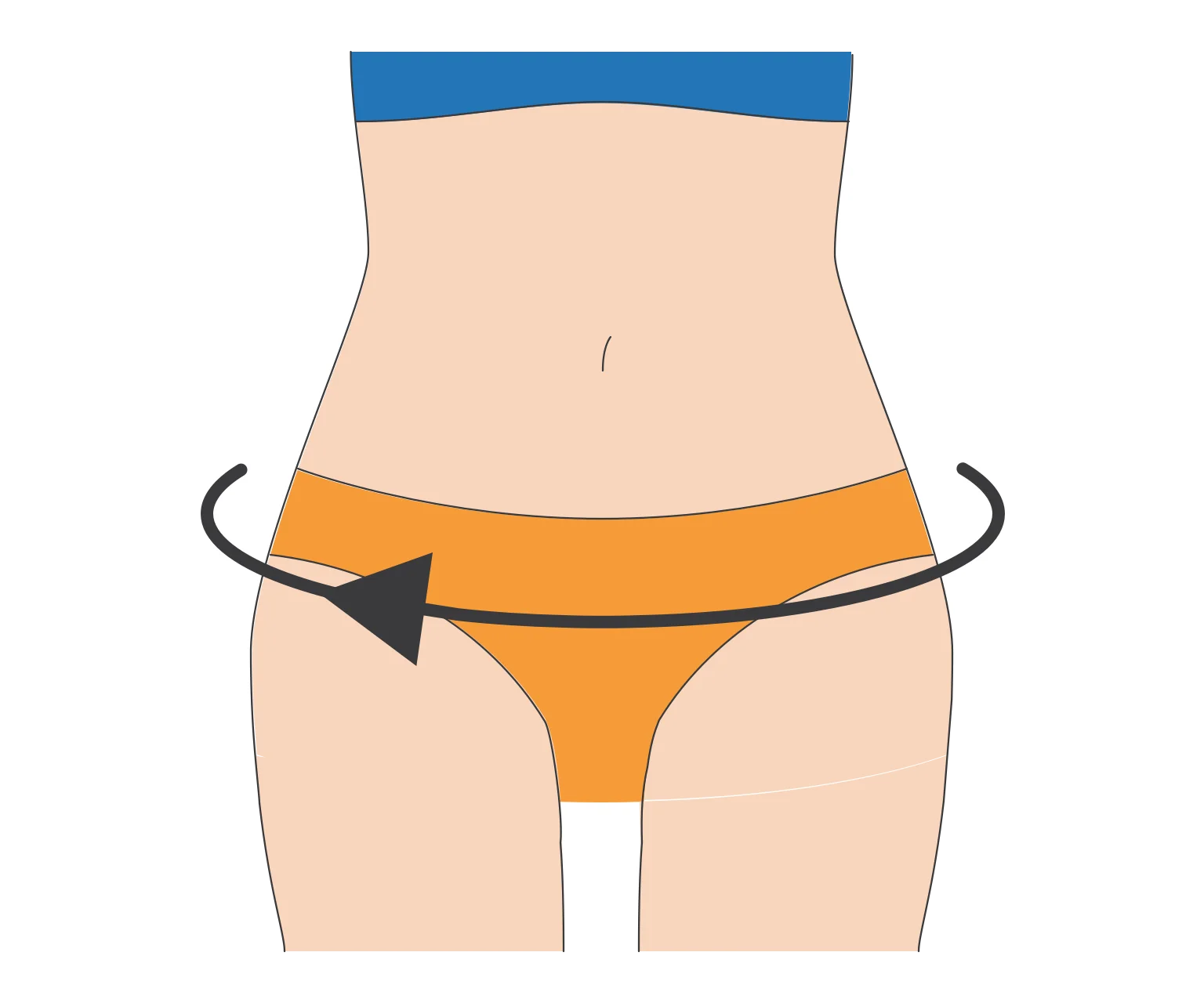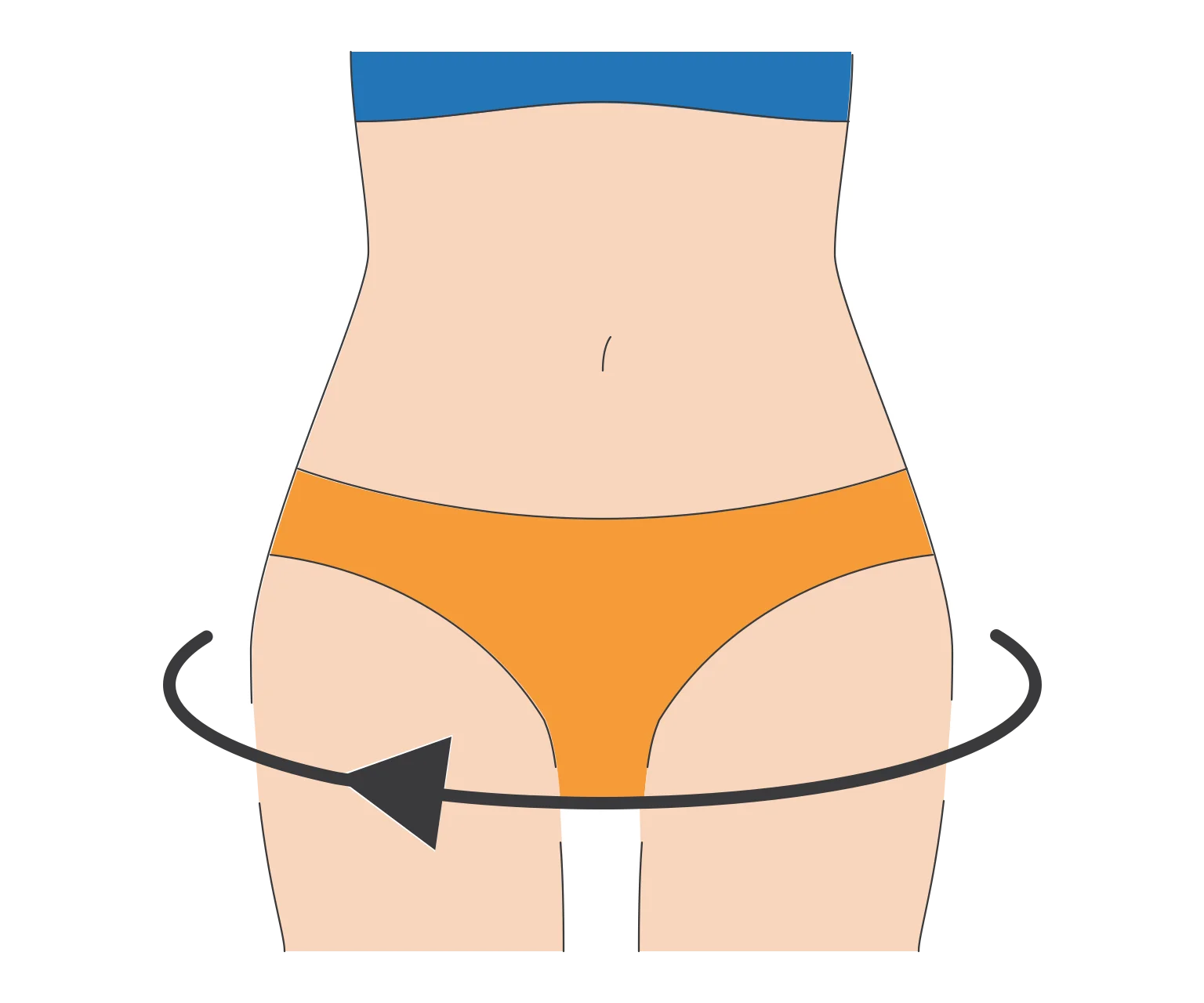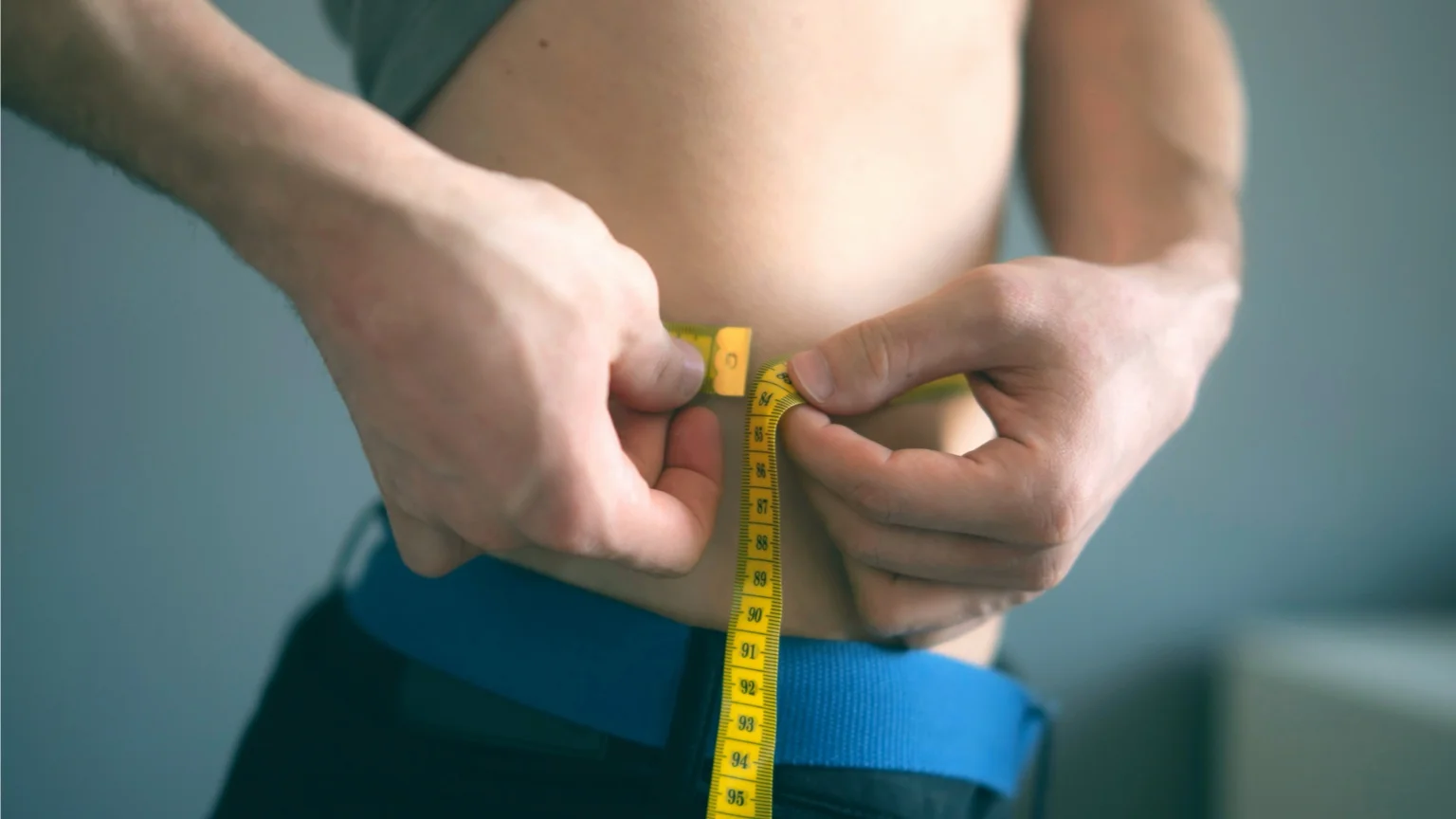Links marked with * — Partner products have been carefully selected by Gym Geek. When you purchase a product through one of these links, we may earn an affiliate commission. As an Amazon Associate we earn from qualifying purchases.
![]()
Most Popular Calculators
Calculators to try next:
Our lean body mass calculator estimates your body fat percentage and total lean mass without the need for special measuring equipment. Simply provide your current weight and height, as well as three waist and hip circumference measurements, to get your estimate.
By understanding your body fat and lean mass, you can track the impact of your weight loss or fitness program and set a realistic goal to achieve a healthy range. Simply change your input weight to understand how losing or gaining weight will affect your estimate.
How to use the lean body mass calculator
Before you start, you will need a recent measurement of your body weight as well as a tape measure. You’ll use the tape measure to take three waist and hip circumference measurements. Accuracy is essential to the calculation, so avoid providing estimates based on your trouser or pant size.
In the lean body mass calculator, provide the following information about your body:
Gender
Gender is important because men and women have difference muscle mass distributions. This leads to differences in body fat percentage.
Our calculation uses formulas derived from two separate scientific studies – one of 532 men and the other of 482 women – so it’s important you select the correct gender before proceeding.
Age
As you age, you typically lose some muscle mass and your body fat percentage tends to increase. We will use your age to adjust the baseline body fat estimate, which makes the result more accurate.
Age is an important factor that affects the estimate for women. However, the male study did not find a strong association between age and body fat for men, so if you are a man, the age you enter will not affect your result.
Please note that the lean body mass calculator is only suitable for persons over the age of 18. The underlying studies that our calculation is based on included men between 21 and 78 years, and women between 15 and 79 years of age.
Height
Your height can affect your body fat and muscle mass percentages because taller individuals generally have more muscle mass. You can provide your height in imperial units (feet and inches) or metric units (centimeters).
Similar to age, height is only a factor in the formula for women and is disregarded for men.
Weight
While the female study found height to be the most important size dimension, apart from waist and hip circumference, the male study found weight to be a more important factor. If you are a woman, the calculator will ignore your weight input when it estimates your body fat percentage.
However, whether you are a man or a woman, we need to know your weight to estimate your lean body mass, which is the percent of your weight that is not fat. You can provide your weight in one of three units – pounds (lbs, standard imperial units), kilograms (kgs, metric) or stone and pounds (st lb, British imperial units).
Waist size
The first circumference measurement is your standard waist size measurement. To measure your waist size accurately, first feel for the bottom of your ribcage and the top of your hips.

Now, mark the halfway point between these two locations on your torso. This will be just above your navel, also known as your belly button.
Take the tape measure and wrap it around your body, pulling it snug. Keep a natural posture during the measurement – avoid artificially inflating or shrinking your waist by breathing in or out.
Record your measurement in inches or centimeters and enter it into the calculator.
Top of hip bone size (iliac crest)
Now at the sides of your torso, feel for the top of your hip bone. This part of your hips is known as the iliac crest and flares out to the sides.

Wrap the tape measure around your body, again pulling it snug. Record your measurement in the calculator.
Hip size
The final circumference you’ll measure is your hip size. This is further down from the iliac crest where your buttocks are at their widest.

Ensure you are standing straight while taking the measurement. If you are unsure where to take the measurement, take the widest point you can measure around your hips.
Performing the calculation
Once you’ve provided all the required information, hit the “Calculate” button. The lean body mass calculator will instantly process your inputs and output two estimates:
- Body fat percentage – This is the percent of your body mass that is estimated to be fat.
- Total lean body mass – This is the amount of kilograms of pounds of lean mass your body has. This will have the same imperial or metric units that you provided for your current weight.
What is body fat percentage?
Body fat percentage is the amount of your body that is made up of fat, compared to your overall body weight. For example, if you weight 150 pounds and have 30 pounds of body fat, your body fat percentage is 20%. Body fat percentage can be a useful indicator of healthy body weight, alongside other metrics like Body Mass Index (BMI).
Healthy body fat ranges
A healthy body fat percentage depends on your age, gender and other factors.
For men, a body fat percentage between 18% and 24% is considered acceptable according to the American Council on Exercise, while those with a good level of fitness may achieve 14-17%.
Women need a higher percentage of body fat to support reproductive functions and hormonal balance. The acceptable range for women is 25 to 31%, while fitness enthusiasts may have a range between 21 and 24%.
It’s important to say that these ranges are only guidelines and a healthy body fat content will depend on your individual health goals and needs. It’s always best to consult with a doctor or other healthcare professional before making changes to your diet, nutrition, lifestyle, activities or exercise programs.
Types of body fat
In terms of body composition, the two important types of fat in your body are visceral fat and subcutaneous fat. Visceral fat is located deep inside your abdominal cavity, around and between your organs, including your liver, pancreas and intestines.
Subcutaneous fat, on the other hand, lies just beneath your skin. This fat acts as a significant energy reserve for your body and helps insulate your body to maintain good temperature regulation.
Visceral fat
Visceral fat is the type of fat that accumulates around your vital organs in your abdominal cavity. This type of fat is not the kind that’s visible from the outside, and can only be measured precisely using imaging methods like MRI or CT scans.
Unlike the fat directly beneath your skin, visceral fat is “metabolically active”, meaning it releases hormones and other substances that can cause inflammation and increase your risk of chronic disease.
Excessive amounts of visceral fat have been linked to a higher risk of developing serious health conditions, including:
- Cardiovascular disease – Visceral fat produces inflammatory substances that can damage your blood vessels, increase your blood pressure and increase the risk of heart attack or stroke.
- Type 2 diabetes – Because visceral fat interferes with insulin production and increases your body’s insulin resistance, it can lead to high blood sugar levels and eventually type 2 diabetes.
- Inflammatory diseases – Excessive visceral fat is associated with inflammation in the body. This can lead to chronic inflammatory diseases like arthritis or asthma.
Subcutaneous fat
Subcutaneous fat is the other major type of fat (in terms of body mass). This kind of fat is the layer that lies just beneath your skin, covering most parts of your body.
Subcutaneous fat, alongside visceral fat, acts as a long-term store of energy, since the “extra fat” that’s stored can be readily converted into energy that can be used by your body’s cells.
This type of fat also provides insulation to your body, helping to regulate your body temperature and shielding your internal organs from external temperature changes.
What is lean body mass?
Lean body mass (LBM) is the total body weight that is not fat. This includes your bones, muscles, organs and the water content of your body.
Lean muscle mass helps increase your metabolism, which can aid in weight management. More lean mass can also improve your physical performance and strength, which is important or athletes or those who engage in regular physical activity.
Increasing lean mass
A proven way to increase your lean muscle mass (and in turn your lean body mass overall) is through resistance training. By challenging your muscles with weights, you can stimulate muscle growth and increase your lean mass over time.
At the same time, it’s important to eat a healthy diet with enough protein to support muscle growth. Protein is a key macronutrient involved in the growth and repair of muscle tissue. A protein intake of between 1.2 g and 1.6 g per kg of bodyweight should be sufficient for most people.
How to measure body fat and lean body mass
There are many methods to measure your body fat percentage, including skinfold caliper measurements, bioelectrical impedance analysis (BIA) and DEXA scans.
Skinfold calipers
Skinfold calipers are perhaps the most widely used tool for measuring body fat. This method sees you pinch your skin at various points around your body, then measuring the thickness of each skinfold with a special caliper tool.
The measurements from different parts of your body are taken together to estimate your overall body fat percentage.
Skinfold calipers are easy to use and provide a fast result, but they only measure subcutaneous fat without directly measuring the fat around your organs (visceral fat).
Despite this, the caliper method is a useful tool for tracking changes in your body fat over time. By taking a consistent measurement, you can get a trend of whether your body fat percentage is increasing or decreasing.
Impedance smart scales
Smart scales use a burst of electrical current between your feet to measure the “impedance” of your body. This impedance can be used to estimate your body fat percentage using an algorithm tweaked for each scale.
Impedance scales are convenient and easy to use, and widely available in stores. This makes them accessible to anyone looking to track their body fat percentage regularly at home.
A major downside of impedance scales, however, is their accuracy. The results will fluctuate based on your hydration levels. For this reason, we recommend using smart scales under consistent conditions – for example, taking your measurement first thing in the morning before eating or drinking.
There is also controversy around some brands of smart scales, since they base their calculations on your height and weight rather than making a direct measurement based on electrical impedance alone.
DEXA scan
Dual-energy x-ray absorptiometry, more simply known as DEXA, is a low-dose x-ray that measures the density of different body tissues, including body fat and lean mass. It’s considered one of the most accurate ways to measure body fat.
In a DEXA scan, you lie on a table while an x-ray machine scans your body from head to toe. The process takes around 10 to 20 minutes.
The results can by analyzed to estimate your body’s fat and lean mass composition. DEXA scans can also provide valuable information about bone density and health.
Although incredibly accurate, DEXA scans are expensive and may not be an accessible option for everyone.
Bod pod
The bod pod is a chamber that you lie inside which measures your body weight and volume based on the displacement of air. This information can be used to estimate your body fat percentage.
The bod pod is non-invasive. Unlike other methods, it doesn’t need direct measurement with electrodes, x-rays or calipers. This makes it more comfortable and convenient for many people.
Estimating body fat and lean body mass
While directly measuring body fat with calipers or scans is ideal, it’s possible to estimate body fat percentage and lean mass using simple measurements taken at home.
Two studies in the 1980’s, each on men and women, looked at the relationship between waist and hip circumference measurements and a person’s body fat percentage and lean body mass composition.
The studies took detailed measurements of the participants’ bodies, recording information like waist circumference, hip circumference and body weight.
Comparing these measurements against the true body fat composition of the participants, the studies crunched the data to produce two formulas for estimating body fat percentage. The formula for men is based on the waist circumference and two hip measurements, as well as body weight; while the formula for women is based on waist and hip circumference, alongside height and age.
Since these calculations only need a simple tape measure, they can be easily performed by individuals at home or in healthcare settings without access to specialized equipment.
How accurate are body fat and lean mass estimates?
Our lean body mass calculator is generally accurate within a few percent for most people. However, there are some things that may affect accuracy:
- Muscle mass distribution – The calculator uses studies based on representative populations, which typically have average distribution of muscle mass through their bodies. If you have an uneven distribution (i.e. more upper or lower body than typical), the results may not be accurate.
- Hydration – Your level of hydration can affect your body weight, as well as your circumference measurements. We recommend you use the calculator at consistent times.
It’s important to note that body fat estimates cannot replace professional medical advice and should be used for information purposes only.
References
Tran, Z. V., & Weltman, A. (1988). Predicting body composition of men from girth measurements. Human biology, 60(1), 167-175.
Tran, Z. V., & Weltman, A. (1989). Generalized equation for predicting body density of women from girth measurements. Medicine and science in sports and exercise, 21(1), 101-104.


